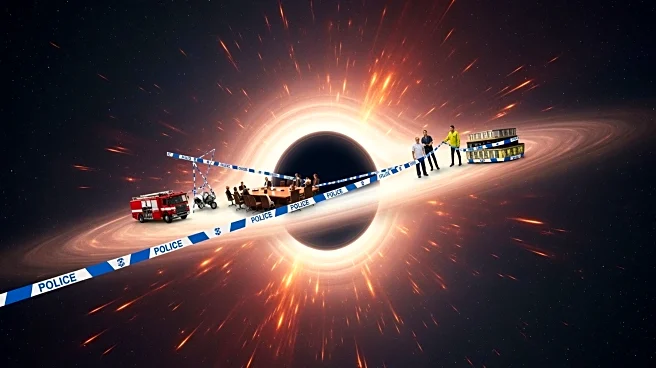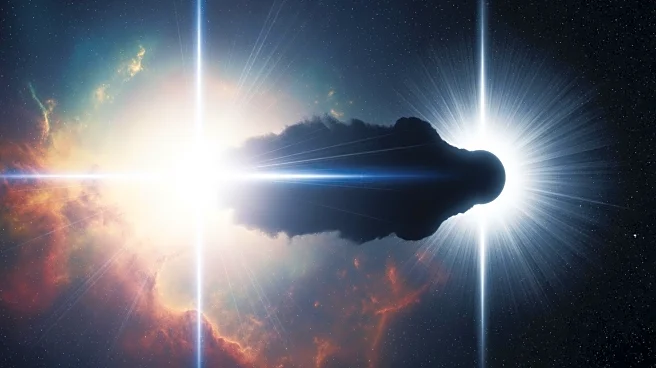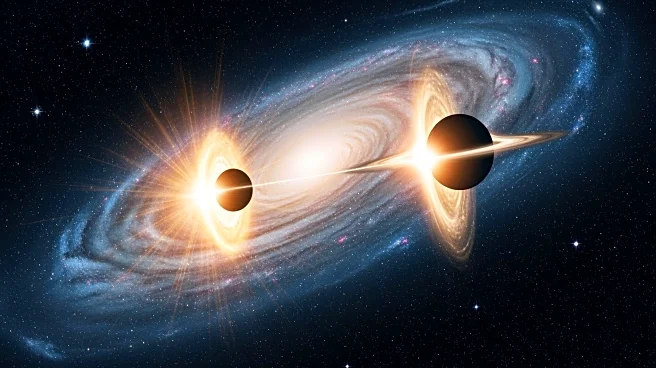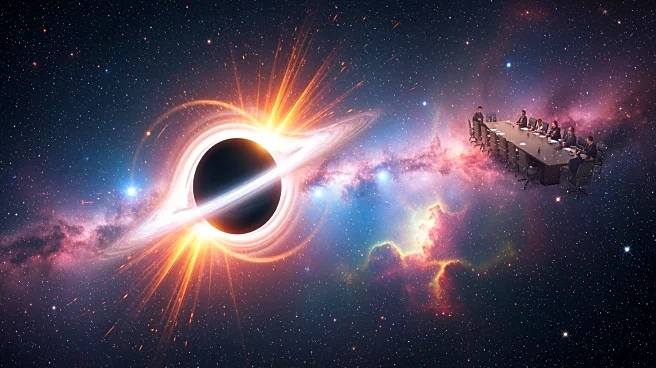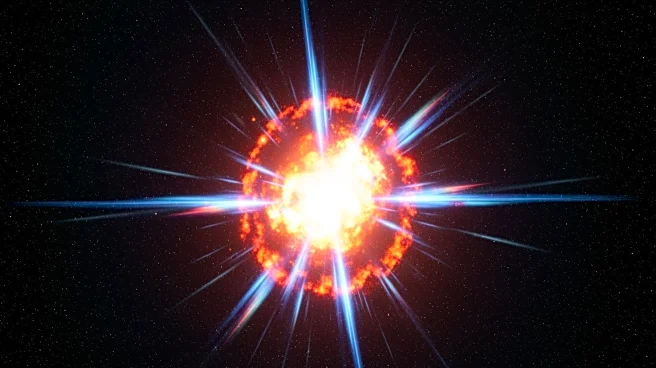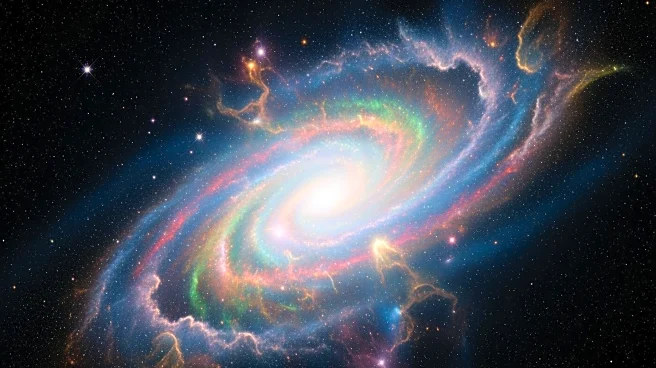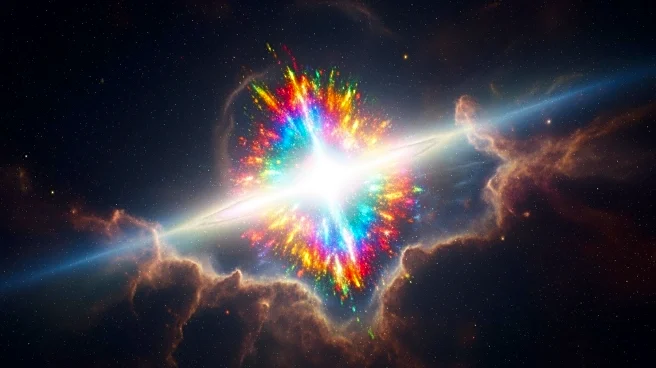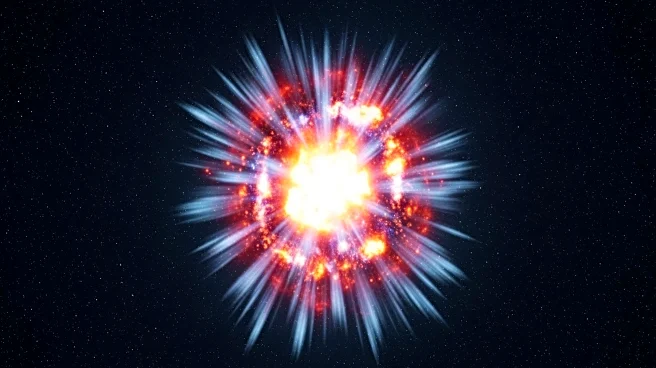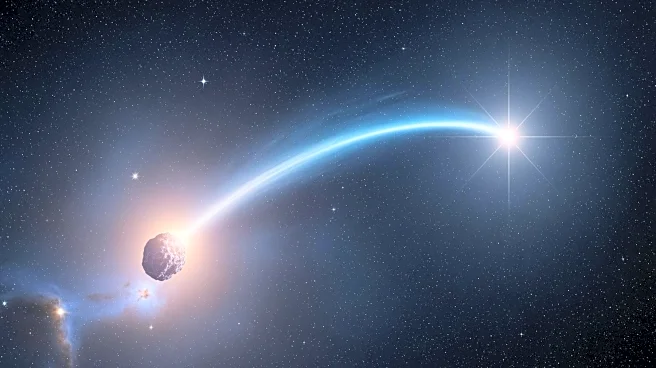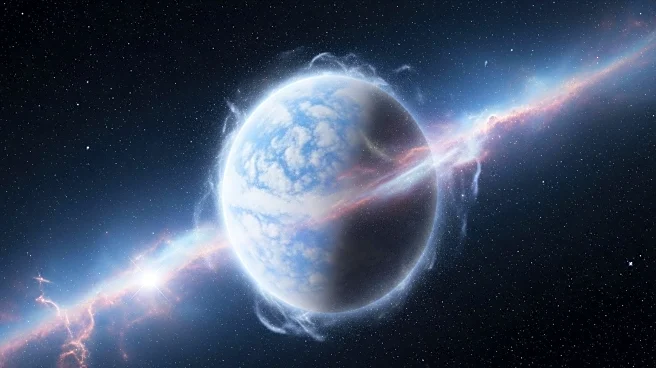What's Happening?
Astronomers have observed a unique astronomical event where a black hole appears to have consumed a star, resulting in an extraordinary gamma-ray burst. This event, designated GRB 250702B, was detected
on July 2, 2025, by NASA's Fermi space telescope after traveling 8 billion years across the universe. The gamma-ray burst lasted for an unprecedented 7 hours, with fluctuations in brightness, and was preceded by soft X-rays detected by the Chinese-European Einstein Probe. The event was further studied using the European Very Large Telescope and the Hubble Space Telescope, pinpointing its location to a faint galaxy near the constellations Aquila and Scutum. Researchers suggest that the burst may have been caused by a merger between a helium star and a stellar-mass black hole, leading to the black hole consuming the star's core and emitting jets that blew the star apart.
Why It's Important?
This discovery is significant as it may represent a new type of gamma-ray burst progenitor system, expanding our understanding of cosmic events. Gamma-ray bursts are among the most energetic phenomena in the universe, and understanding their origins can provide insights into the life cycles of stars and the behavior of black holes. The event's unusual characteristics challenge existing models and theories, prompting astronomers to consider rare and unique scenarios. The findings could influence future research in astrophysics, particularly in the study of black holes and stellar evolution, and may lead to new discoveries about the universe's structure and history.
What's Next?
Further analysis and data collection from observatories worldwide are expected to continue, as researchers aim to confirm the hypothesis of a black hole-star merger. The publication of a NASA press release, accompanied by animations, is anticipated, although delayed due to a government shutdown. This event may prompt additional studies and observations to identify similar occurrences, potentially leading to a deeper understanding of gamma-ray bursts and their progenitors. The scientific community is likely to explore the implications of this discovery, considering its rarity and the challenges it presents to current astrophysical models.
Beyond the Headlines
The event raises questions about the nature of black holes and their interactions with surrounding celestial bodies. It highlights the complexity of cosmic phenomena and the need for advanced observational technologies to capture and analyze such events. The discovery may also have implications for the study of gravitational waves, as mergers involving black holes are potential sources of these ripples in spacetime. Ethical considerations regarding the allocation of resources for space exploration and research may arise, as scientists seek to balance the pursuit of knowledge with practical concerns.
